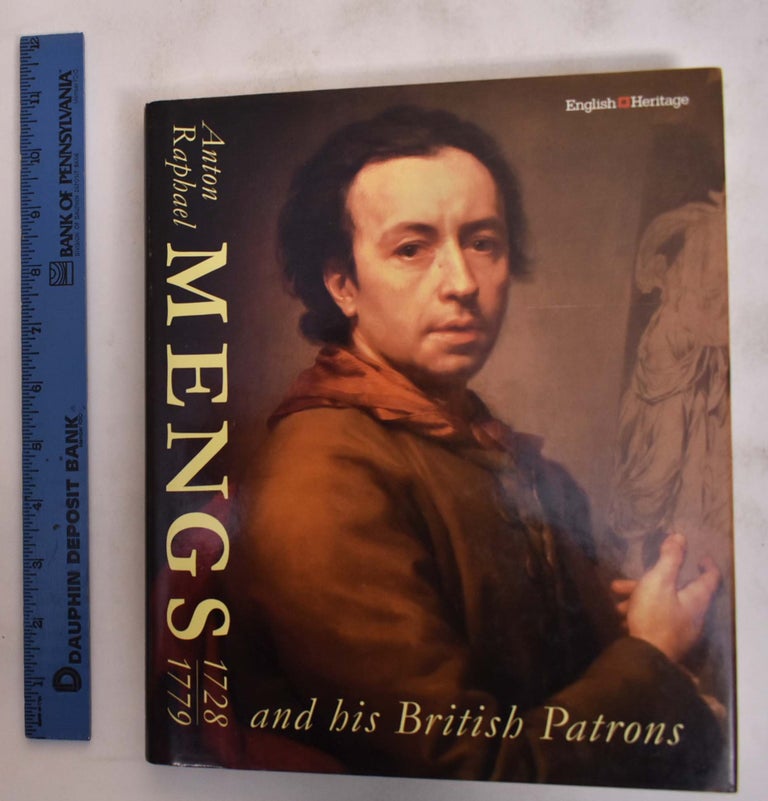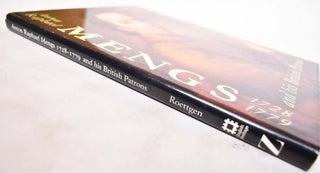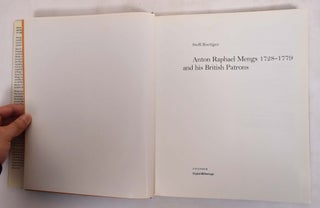Anton Raphael Mengs 1728-1779 and his British Patrons
London/New York: Zwemmer/English Heritage/Rizzoli, 1993. Hardcover. Black cloth boards with gilt lettering on spine, color illustrated dust jacket, 160 pp. with approximately 50 color and bw images. VG- (light foxing to upper block). Item #176219
ISBN: 9780302006238
Catalogue from the exhibition of 61 works. Many were paintings and drawings, but some were books, letters, etc. (not pictured). With an introduction covering several topics including Sir Charles Hanbury Williams, The Raphael copy for Northumberland House, Paintings for British Patrons, British Commissions and Contacts in Rome, and much more. WIth a chronology of Meng's life and the catalogue of works, annotated. " During his lifetime Anton Raphael Mengs (1728-79) was considered one of the most important painters in Europe, but his reputation declined with the rise of Romanticism and has only begun to recover in recent years. Born in Aussig, and brought up in Dresden, he became Principal Painter to the royal courts of Saxony and Madrid, but his main base was to be Rome. He never visited Great Britain, refusing, out of loyalty to his King, the invitations he received to come and work here. Through the diplomat Sir Charles Hanbury Williams in Dresden, Mengs was introduced to key members of the British circle in Florence, such as the ambassador Sir Horace Mann, who provided a crucial link between British travellers and the artistic circles of Rome. This was, of course, the heyday of the British Grand Tour, and in many ways, it was unnecessary for Mengs to go to Britain - Britain, in the wealthy form of its youthful aristocracy, came to him. As the Seven Years' War cut off Mengs's official source of income from the Elector of Saxony, he was probably grateful to be able to turn to the lucrative field of Grand Tour portraiture. Mengs quickly became one of the central figures of the Neoclassical 'set' that gathered round the great German antiquarian Winckelmann. His studio was open to all, and this period saw figures like Richard Wilson (a friend, whose portrait Mengs painted), Robert Adam, Allan Ramsay, Robert Wood, James 'Athenian' Stuart, Piranesi, and of course, Mengs's great rival in the field of Grand Tour portraits, Pompeo Batoni, all at work and sharing ideas and tastes. Thomas Jenkins, artist and the most famous dealer of the time, was another friend. In this intellectual climate, Mengs produced works for like-minded British patrons which were to have a strong influence on art in this country, like the enormous copy after Raphael's School of Athens for Northumberland House (now in the Victoria and Albert Museum) and Augustus and Cleopatra, (finished in 1761) for Henry Hoare of Stourhead - one of the crucial foundation works of Neo-classicism. Encouraged by Winckelmann, Mengs committed his theory of art to paper, and through works like his Gedanken uber die Schonheit, which was to be translated into every major European language, including English (in 1792), his fame and influence spread. During the long eclipse of Mengs's reputation, many of his paintings lay hidden in British collections, to survive and finally be rediscovered; in some cases these works had been considered lost. This catalogue to accompany the exhibition 'Anton Raphael Mengs and his British Patrons' at the Iveagh Bequest, Kenwood, illustrates such works and it is hoped that, as a result of it, more 'lost' works will be unearthed." -website.
OCLC: 28582131
Sorry, this book is not available.
Notify me when this comes back in stock.




